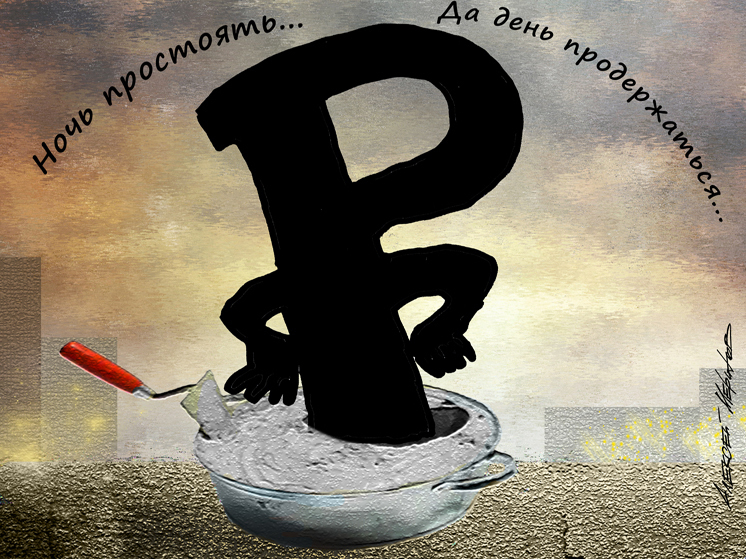Economist Maslennikov predicted a corridor of 86-90 per dollar
Shock strengthening — this is what you can call what is happening now with the ruble. The Russian currency is rapidly gaining strength: on June 20, the dollar exchange rate in over-the-counter trading fell to the half-forgotten level of 80. Such high volatility was an indirect result of US sanctions against the Moscow Exchange. The situation is somewhat reminiscent of the picture of the summer of 2022, when an “American” could be bought for 55 rubles, and people in the Ministry of Finance clutched their heads as problems arose with filling the budget.

Analysts agree: the stoppage of exchange trading in dollars and euros has increased nervousness among market participants and given rise to new infrastructure risks . In fact, we are now witnessing a restructuring of the entire exchange rate system, and this process is not without emotions and costs. The market is adapting, getting used to new realities, and any surprises are possible here.
“The situation is absolutely unpredictable,” says leading expert at the Center for Political Technologies, economist Nikita Maslennikov. – Firstly, all the necessary mechanisms for currency conversion have not yet been developed in over-the-counter trading; this will take about a week and a half. The volatility in this case is quite logical: something similar in Russia has always happened at the peak of new sanctions waves that directly affected the ruble exchange rate. Trading in dollars and euros is moving to the over-the-counter market, and it's not easy. Bidders cannot fully assess currency risks and are getting rid of the “authorized” currency — the yuan: exporters sell it ahead of schedule, not understanding how the architecture of international interbank payments and settlements will develop in the future. Moreover, the US Treasury is increasingly tightening the screws on foreign, mainly Chinese banks.
All this resulted in a sharp increase in the imbalance between the supply and demand of yuan. Excess supply was recorded even before June 12 (when sanctions were introduced against the Moscow Exchange), and today it has become too large. And when there is too much currency, stock quotes fall down.
— The federal budget clearly needs a weaker ruble, otherwise difficulties will arise in filling the treasury. Moreover, in the first quarter, the Ministry of Finance doubled its expenses for repaying domestic debt to almost half a trillion rubles. I think that in the near future both the Ministry of Finance and the Central Bank will somehow react to this ultra-high volatility. For example, sales of yuan on the market will be suspended or reduced to a minimum according to the budget rule. These measures suggest themselves. Of course, if the rate around 82 per dollar had lasted for at least a month, we would have received a powerful anti-inflationary factor, since imports would begin to grow quite significantly, putting pressure on domestic prices. But the interests of the budget are more important.
— The speculative component depends on the spreads (difference) between the buying and selling rates. When a large gap persists for a long time, the meaning of such trading disappears and speculators lose motivation. With a wide spread (as it is now), it is quite difficult to speculate in the market.
— I think that in the future banks will focus on the official exchange rate. Including because of the risk of getting caught, because the Central Bank has introduced regulatory standards that limit the maximum level of fluctuations. Banks will not deliberately violate these requirements — it will cost themselves! Although, of course, some difference will remain in any case: there is no such rule that the purchase and sale rates of a currency must correspond exactly to the official rate. Everything will depend on the ratio of supply and demand in each specific bank.
— For now I can say one thing: high volatility will remain in the next one and a half to two weeks. And then, I believe, the rate will consolidate in a fairly wide corridor of 86-90, where it will remain at least until the end of summer. It will definitely roll back from the level of 82: the budget feels comfortable, starting at 85-87 rubles per dollar.
— It all depends on what you need the currency for. If you are going abroad for a summer vacation, then now, of course, is the best time to buy dollars and euros when the ruble has risen in price. But as a means of saving, dollars and euros are clearly not the best option: foreign currency deposits have low returns, and it is not known when geopolitical tensions will begin to subside. Accordingly, today it is preferable to invest in ruble deposits — with their “exorbitant” rates of 18-20% per annum.


